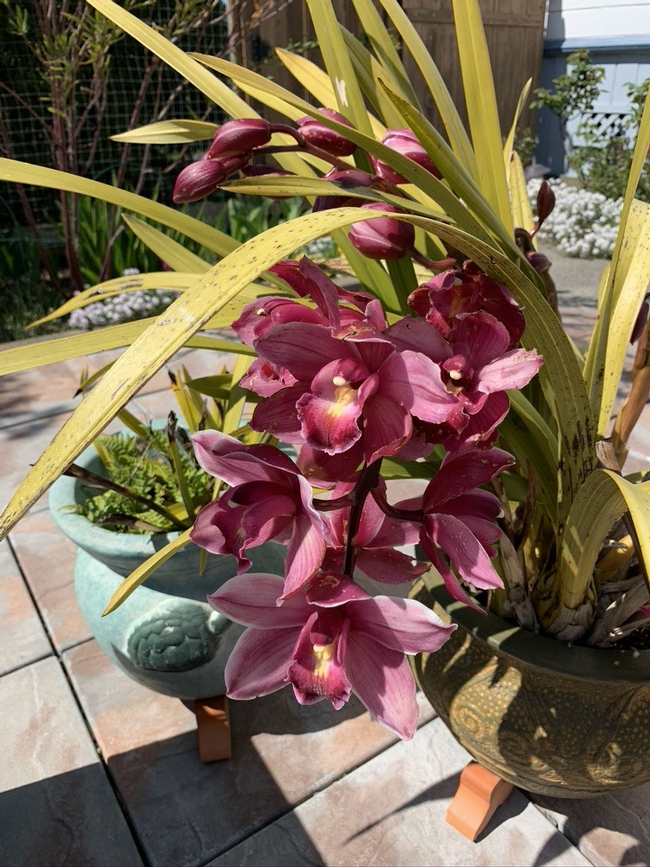The Cymbidium (sym-BID-ee-um) orchids are known for their beautiful, long-lasting sprays of flowers and they do well outside.
There are two main types—standards and miniatures. Miniatures only grow where summer nights are above 70°F. Our coastal climate is not suited for miniatures unless you grow them indoors or a heated greenhouse.
The standard type of cymbidium is best for Humboldt County. They originally came from cool and bright areas in Asia, so let's talk about conditions that are required to make these orchids thrive.
Light is important as they need lots of it, but cool temperatures. Give cymbidiums the maximum amount of light possible. Full sun is tolerated in cool areas, such as coastal California. The leaves should be a medium to golden green color, not dark green.
Temperature is another critical factor for flowering. Optimum temperatures are 45-50°F at night and 65-75°F during the day. When the plants are in bud, temperatures must be as constant as possible, between 55-75°F. I leave mine outside all year long as most cymbidiums can tolerate light frosts and survive.
Water and moisture are important too. They generally produce all their vegetative growth during spring and summer (growth season) and need the most water those months. You should water heavily during the growth season to keep the potting material evenly moist. After late summer, just keep them barely moist as our outdoor humidity is enough.
Fertilizing at the right time helps cymbidiums flower. Use a high nitrogen mixture (30-10-10) in spring and summer and apply every two weeks. In the fall use a high phosphorus fertilizer (10-30-20) to help form bloom spikes. In the winter fertilize about once a month.
Potting and re-potting is where more work is involved as cymbidiums can grow quite large. Divide or re-pot after the plant has quit flowering. If you are dividing a large cymbidium, you may need to use a large carving knife or even a Sawzall to separate the pseudobulbs. If planting into a pot, select one that allows for at least two to three years of pseudobulb growth before crowding the pot. Place the active growing pseudobulb(s) farthest from the side of the pot. Pick a water-retentive potting mix—medium-grade fir bark with peat moss and perlite is a common mix.
So, let's plant these orchids and enjoy their beautiful flowers every spring and summer. Visit our own Humboldt Orchid Society for more information about growing orchids.
Reference: American Orchid Society
